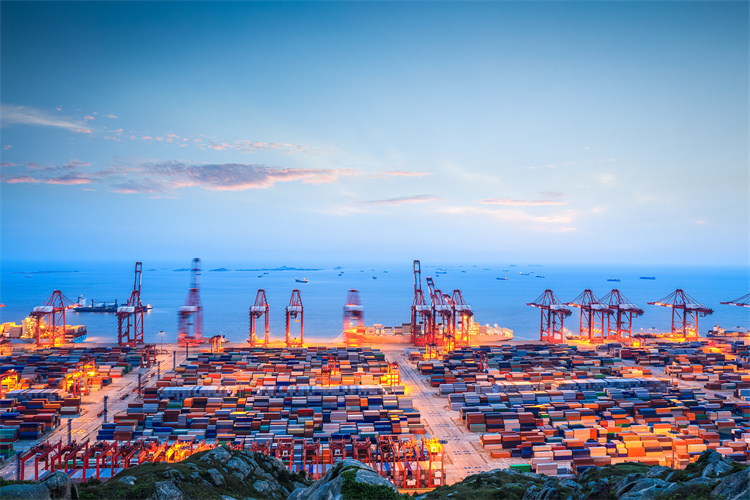Analyzing Global Freight Market Trends for 2024

Understanding freight market trends holds immense importance for stakeholders in the logistics industry. The year 2024 presents a pivotal moment in global trade, with significant shifts anticipated in the market dynamics. The global freight market is projected to reach an impressive USD 5963.09 billion, highlighting the sector's robust growth trajectory. This period marks a critical juncture for businesses aiming to navigate the evolving landscape effectively. Industry players must remain informed and agile to capitalize on emerging opportunities and address potential challenges.
Overview of the Global Freight Market
Current State of the Global Freight Market
Key Players and Regions
The global freight market features prominent players across diverse regions. Asia-Pacific leads in market size, driven by significant transportation costs. India plays a crucial role, with logistics expenses forming a large part of its GDP. Embracing zero-emission trucks in India could yield substantial fuel savings. Europe excels in logistics performance, particularly in road quality. European nations consistently rank high in overall logistics efficiency. The United States focuses on robust freight rail networks, enhancing connectivity across vast distances.
Recent Developments and Changes
Recent developments have reshaped the global freight landscape. APAC international capacity grew by 16% in early 2024, slightly outpacing regional demand. Container ports reported a 7.4% volume increase in the first half of 2024. Freight rates experienced a 5.6% Year-over-Year growth in June 2024, marking the first rise since 2022. Bullish container freight rates continue, with rate hikes on Asia-Europe and Trans-Pacific routes. These changes highlight a dynamic environment for global freight operations.
Major Challenges Facing the Global Freight Industry
Economic Factors
Economic factors present significant challenges for the global freight industry. The market faces fluctuating demand patterns, influenced by seasonal goods shipping earlier to avoid delays. Freight trucking is projected to grow from 2.3 trillion USD in 2023 to 3.4 trillion USD by 2030. Despite stable capacity, some carrier capacity exits the market, leading to gradual truckload rate increases. These economic dynamics require careful navigation by industry stakeholders.
Regulatory and Environmental Issues
Regulatory and environmental issues also pose challenges. Stricter regulations on emissions impact operational strategies. The push for sustainability drives the adoption of cleaner technologies. Zero-emission trucks offer potential cost savings but require significant investment. Compliance with evolving regulations demands adaptability from global freight companies. These challenges necessitate strategic planning and innovation to ensure long-term success.
Emerging Trends in 2024

Technological Advancements in Global Freight emerging trends in ocean freight
Automation and AI in Freight
Automation and AI technologies are transforming the global freight industry. Companies are leveraging these advancements to enhance supply chain efficiency. AI provides better demand forecasting, route optimization, and real-time tracking of shipments. Machine learning algorithms analyze vast amounts of data to predict trends and optimize operations. Automated systems streamline processes, reducing human error and increasing productivity. The integration of AI in freight delivery offers a competitive edge to logistics companies.
Scientific Research Findings:
AI and machine learning enhance supply chain efficiency.
Automation reduces operational costs and improves accuracy.
Real-time tracking ensures timely delivery and customer satisfaction.
Impact of Blockchain Technology
Blockchain technology is revolutionizing the global freight market. This innovation ensures secure and transparent data sharing among stakeholders. Companies use blockchain to monitor real-time information and offer predictive alerts. The technology provides holistic visibility of ownership, enhancing trust in transactions. Blockchain's decentralized nature prevents data tampering and fraud. Logistics firms benefit from improved efficiency and reduced paperwork.
Scientific Research Findings:
Blockchain ensures secure data sharing and transparency.
Predictive alerts enhance decision-making and risk management.
Decentralized systems prevent fraud and unauthorized access.
Shifts in Trade Routes and Logistics
Influence of Geopolitical Changes
Geopolitical changes significantly impact global freight routes. Political tensions and trade policies alter traditional logistics pathways. Companies must adapt to new regulations and tariffs. Changes in diplomatic relations influence the flow of goods across borders. Businesses need to stay informed about geopolitical developments to mitigate risks. Strategic planning helps navigate these complexities effectively. cross-border e-commerce logistics
Key Considerations:
Political tensions affect trade agreements and logistics routes.
Regulatory changes require adaptation and compliance.
Diplomatic relations influence cross-border trade dynamics.
New Trade Agreements and Partnerships
New trade agreements and partnerships shape the future of global freight. Countries collaborate to enhance trade relations and economic growth. These agreements create opportunities for expanding logistics networks. Companies form alliances to optimize supply chain operations. Strategic partnerships enable access to new markets and resources. Businesses must leverage these opportunities to remain competitive.
Key Considerations:
Trade agreements foster economic collaboration and growth.
Partnerships enhance logistics efficiency and market reach.
Strategic alliances provide access to resources and expertise.
Future Predictions and Implications

Market Growth Forecasts for Global Freight
Expected Growth in Different Regions
The global freight market anticipates substantial growth across various regions. Asia-Pacific remains a dominant force, driven by increased trade activities and infrastructure investments. Europe shows steady expansion due to advancements in logistics technology. North America benefits from robust economic conditions and improved supply chain networks. A survey of 113 industry professionals revealed that 49% expect a volume increase in the next 3-6 months. This optimism reflects the dynamic nature of global freight market.
Sector-Specific Growth Predictions
Maritime freight continues to expand due to rising demand for container shipping. Industry experts predict significant advancements in multimodal transportation solutions. These predictions highlight the diverse opportunities within the global freight landscape.
Strategic Recommendations for Stakeholders
Investment Opportunities
Stakeholders in the global freight market should explore strategic investment opportunities. Technological innovations such as AI and blockchain offer potential for enhanced efficiency. Investments in sustainable practices align with regulatory trends and consumer preferences. Companies should consider expanding into emerging markets with high growth potential. Collaboration with technology providers can drive competitive advantages. These strategies position businesses to capitalize on evolving market dynamics.
Risk Management Strategies
Effective risk management is crucial for navigating the complexities of the global freight market. Companies must monitor geopolitical developments to mitigate potential disruptions. Diversifying supply chains reduces dependency on specific routes or regions. Implementing advanced data analytics enhances decision-making and forecasting accuracy. Regularly reviewing compliance with environmental regulations ensures operational continuity. These strategies equip stakeholders to address challenges and seize opportunities in the global freight arena.
The global freight market in 2024 presents a landscape of promising growth and transformation. Key trends include technological advancements, shifts in trade routes, and strategic partnerships. Market forecasts indicate positive growth prospects driven by increased consumer demand and industrial recovery. The logistics sector benefits from technological innovations, enabling efficient operations. Freight demand will likely rise with infrastructure development and nearshoring. The future of the global freight market holds significant opportunities for stakeholders who adapt to these evolving dynamics. Industry players must remain proactive to capitalize on these emerging trends.
See Also
Exploring the Latest in Sea Freight Logistics for 2024
Analyzing the Future of Less Than Truckload Freight
Understanding the Influence: Trends in Logistics Risks
Unlocking the Possibilities: AI's Role in Logistics Revealed
Revealing the Definitive Handbook on Worldwide Logistics Firms
